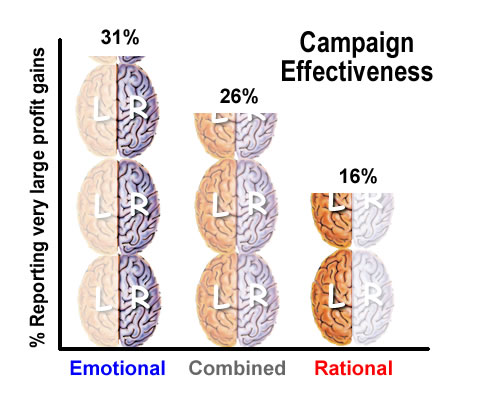Eight Reasons You Need to Use AI Writing Tools
Everywhere you go, there’s a buzz about ChatGPT and similar AI tools. Whether it’s Instagram reels, Facebook communities, or YouTube, people are talking about AI Writing Tools, and for a good reason.
The emergence of AI writing software has compelled us to revisit how we write content. Although there is disagreement about the extent to which AI writing software will replace content writers, all agree that it will significantly impact their roles. Consequently, content writers and marketers should capitalize on an AI tool to craft high-quality content to bolster their efficiency.
So should you jump on the AI-writing bandwagon? Check out these eight reasons to use AI writing tools:
Why Should You Use An AI Writing Tool To Write Content?
1. Less Time Consuming
Writing content is time-consuming and tedious. With an AI writing tool, you can quickly generate ideas, create drafts, and refine them with minimal effort. As a busy marketer or blogger, you can use AI writing tools to streamline your workflow and focus on more critical tasks.
AI writing software can reduce the time it takes to craft extensive blog posts from around six days down to a mere 3-4 hours. From keyword placement, structure and grammar checks, tone alterations, and formatting for submission – AI writing software assists in any editing needs that may arise.
2. Produce Engaging Content
AI writing tools help you create content that can engage readers by understanding their interests. It does this by applying natural language processing to understand the type of content your audience wants. This technology enables you to generate a personalized experience for your readers by creating content that resonates with them.
Artificial intelligence tools like Jasper offers 101 tones to help you produce content that resonates with your target audience, no matter the context or message. Apart from this, it also provides various word choices, helping the user to craft more compelling content.
3. Search Engine Optimized Content
Writing content is time-consuming and tedious. With an AI writing tool, you can quickly generate ideas, create drafts, and refine them with minimal effort. As a busy marketer or blogger, you can use AI writing tools to streamline your workflow and focus on more critical tasks.
AI writing software can reduce the time it takes to craft extensive blog posts from around six days down to a mere 3-4 hours. From keyword placement, structure and grammar checks, tone alterations, and formatting for submission – AI writing software assists in any editing needs that may arise.
4. Cost-Effective
AI writing software is a cost-effective way to generate content. This is because it reduces the need for an additional content writer and the associated costs. Additionally, these tools can save time and money when editing content.
Let’s assume you are just starting and don’t have any extra resources to hire a professional content writer. In this case, AI writing software can help you craft high-quality content without breaking your budget. You can simply go for a trial period or free versions of the AI-powered writing tool before opting for a monthly subscription.
5. Create Content In A Variety Of Languages
Another great advantage of using AI writing tools is that they can help you produce content in various languages. This means that if your target audience speaks different languages, you can easily craft content without investing in a translator.
These AI tools use natural language processing and machine learning algorithms to automatically detect the language of your content and tweak it accordingly. Additionally, they can recognize spelling and grammar mistakes to help you create a flawless copy in the desired language.
6. Overcome Writer's Block
Writer’s block is a common issue faced by many writers and bloggers. AI writing tools can help you quickly break through this creative barrier, enabling you to generate ideas and create drafts of content in no time.
Moreover, these tools can also help you develop new ideas for your content by suggesting new keywords or phrases related to your topic. This way, you can come up with creative, unique, and better content that stands out from the competition.
7. Create Different Sorts Of Content
These tools can also help you create different types of content, such as blog posts, emails, video scripts, podcasts, press releases, website copy, social media posts, eBooks, etc. These artificial intelligence tools provide custom templates that enable you to craft content quickly for almost any format.
Furthermore, they can also help you save time and resources by eliminating the need to manually create multiple versions of the same content for different platforms.
8. Increase Your Income
Using an AI content generator can help you increase your income. This is because these AI tools enable you to quickly and easily create high-quality content that resonates with your readers. Furthermore, they can also help you to reduce the time and cost associated with content creation and editing.
The more high-quality content you create, the more likely it is that people will be interested in what you have to offer. Your income can potentially increase if you use an AI writing platform to generate content regularly.
Frequently Asked Questions About AI Content Writing Tools
What Is The Use Of Artificial Intelligence In Writing?
AI can be used for content writing quickly and efficiently. Its language model helps to recognize spelling and grammar mistakes, suggests new topics and ideas, generates content in various languages, creates different types of content, and saves time and money by automating the editing process.
What Is The Scope Of AI Writing Software?
AI content generator is a powerful tool that can be used for many different purposes. From automatically generating content to creating sophisticated natural language processing algorithms, AI writing software has many applications.
For example, the AI assistant can write copy for websites and blogs, articles and whitepapers, generate press releases or product descriptions, and even for entire websites. One can also use them to produce social media posts, emails, and other digital content that can be used to engage with customers or market products.
Is There Any Free AI Writing Tool?
- Copy AI
- Writesonic
- Simplified
- Quillbot
- Rytr
- Text Blaze
- Smart Copy
Can AI Writing Software Outperform Human Writers?
AI writing software can make crafting content quickly and efficiently easier. However, when it comes to creating high-quality content that is engaging and meaningful, these tools have a long way to go before they can outperform human creativity.
These content generators are great at recognizing patterns and generating ideas, but their output is still limited in terms of complexity and nuance. For the most part, artificial intelligence is best used to augment existing content and help fill in the gaps with automated drafts. In the end, nothing beats a human’s creative vision and skill in content creation.
Conclusion
AI writing software has the potential to revolutionize content creation by streamlining the process and making it more efficient. These tools can help you generate ideas, create content quickly, and even save time and resources by automating the editing process. However, these tools are still limited in terms of complexity and nuance. Hence, you should use them to augment existing content rather than replace human writers. Ultimately, nothing beats a skilled human writer when it comes to crafting engaging and meaningful content.
That’s all you need to know about using AI content creation. Go ahead and try one out today and see how it can fill the blank page with impactful content faster and easier. You might just be surprised at how powerful AI can be!







